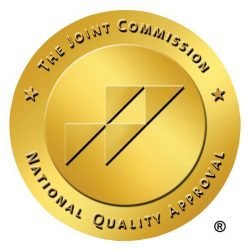Anorexia Nervosa | Signs, Symptoms, Causes, Treatment
Anorexia nervosa has one of the highest mortality rates of any mental illness, but with early detection and treatment intervention, lasting recovery is possible.

What is Anorexia Nervosa?
Anorexia is a complex eating disorder characterized by severe restriction of food intake, intense fear of weight gain, and excessive weight loss. Without treatment, the symptoms of anorexia nervosa will intensify, leading to malnutrition and behavioral changes associated with this illness.
Early intervention for anorexia nervosa is crucial to avoiding long-term changes to brain structure and significant reductions in grey matter. Studies suggest that eating disorder behaviors (such as restriction and compulsive exercise) and significant weight change modulate the brain’s dopamine-related reward response, altering brain chemistry associated with food intake and potentially reinforcing or contributing to the maintenance of eating disorder behaviors.
Accessing treatment for anorexia as soon as possible increases the likelihood that one’s brain will be able to heal itself. However, the longer one struggles with anorexia without treatment, the more difficult it will be to recover, and the more severe the health risks.
History of Anorexia
Holy Anorexia (Anorexia Mirabilis)
Eating disorders of various kinds have been recorded throughout history. Bulimia and anorexia have likely existed since at least the first century. The word “anorexia,” which comes from the Greek language, translates to “without appetite” (a misnomer, to be sure). Although the term “anorexia nervosa” was coined by British physician William Withey Gull in 1874, extreme fasting or prolonged abstinence from food has been practiced at least since the late Middle Ages (anorexia mirabilis).
Anorexia Mirabilis: A Reflection of Historical Attitudes Towards Fasting and Piety
During the 12th and 13th centuries, fasting was an accepted practice in Christianity, associated with self-purification and piety. Caterina di Jacopo di Benincasa, also known as Catherine of Siena (1347 – 1380, was an Italian mystic and member of the Roman Catholic Church who was canonized in 1461. When she was young, Catherine fasted to protest marriage. At the time, deprivation of food was viewed as a spiritual practice. Catherine continued rigorous fasting throughout her life, saying illness prevented her from eating. She died at the age of 33.
Nervous Consumption
In 1689, English physician Richard Morton described two medical cases (one male patient and one female patient) of “nervous consumption” (now called anorexia nervosa).
Anorexia Hysterica to Anorexia Nervosa
In 1874, Sir William Gull, physician to Queen Victoria, coined the term “anorexia hysterica.” He later changed “hysterica” to “nervosa” to avoid confusion, as hysteria was considered a mental disorder at the time.
Anorexia Added to DSM-1
In 1952, anorexia nervosa became the first eating disorder to be included in the Diagnostic and Statistical Manual of Mental Disorder (DSM-1)
Anna Westin Legacy
The Anna Westin Legacy Act became the first federal eating disorders legislation to be passed into law. It was signed into law by President Barack Obama on December 13, 2016
The Anna Westin Bill was named after a young woman who struggled with anorexia throughout her teen years and died of suicide in 2000. Here death increased awareness of eating disorders and treatment, and her legacy lives on through this landmark legislation.
What are the Anorexia Subtypes?
There are two anorexia nervosa subtypes:
- Restricting subtype – primarily involves limiting food intake
- Purging subtype – this involves restrictive eating with recurrent episodes of binge eating and compensatory measures such as vomiting, laxative misuse, or excessive exercise.
Both anorexia nervosa subtypes can have devastating physical, emotional, and psychological impacts, making it crucial to seek professional help and treatment for those affected. Comprehensive treatment often involves a combination of medical, nutritional, and psychotherapeutic interventions tailored to the individual’s needs. Early detection and intervention can greatly improve the prognosis for those suffering from either subtype of anorexia nervosa.
Anorexia is more than just “extreme dieting,” and it’s not just a phase or something one can “grow out of.” It is a mental illness with a high mortality rate that requires comprehensive medical and psychological treatment.
Diagnostic criteria for anorexia nervosa include:
- Dietary restriction.
- Significant weight loss
- Intense fear of weight gain.
- Disturbed perception of body weight or shape.
What is Atypical Anorexia?
Eating disorder symptoms are rarely black-and-white; the term “atypical anorexia” is used when an individual’s symptoms meet all diagnostic criteria for anorexia nervosa (including significant weight loss) but their body weight is considered within or above the “normal” range. Because of this, atypical anorexia is in a category of conditions that fall under the DSM-5 diagnosis of Other Specified Feeding and Eating Disorders (OSFED).
Some research has indicated that individuals with atypical anorexia experience greater psychological distress related to eating and body image than those with anorexia nervosa. Individuals suffering from atypical anorexia or either of the anorexia nervosa subtypes may become more defensive of their health situation due to their BMI not accurately reflecting their situation.
Recognizing Anorexia Symptoms and Warning Signs
While dietary restriction and a hyper-fixation on weight loss are the most recognizable symptoms of anorexia, they don’t tell the whole story. Although each case is unique, some anorexia symptoms and warning signs include:
- Isolation from family or friends
- Withdrawing from social activities once enjoyed
- Preoccupation with food or calorie counting
- Difficulties concentrating on tasks or conversations
- Visible anxiety
- Excessive exercise
- Food restriction
- Not wanting to eat in public
- Irritability
- Extreme weight loss
- Perfectionistic tendencies
Anorexia – Risk Factors
There is no single identifiable cause of anorexia, and each person’s experience is unique. However, genetic, environmental, and social factors likely play a role.
- Genetics Research has shown that those with first-degree relatives who also experienced eating disorders are more likely to be diagnosed with anorexia.
- Psychological Individuals with extremely perfectionistic or people-pleasing personalities may be more susceptible to the development of anorexia.
- Social Cultural pressures and unrealistic physical ideals can trigger restrictive eating behaviors. In many ways, diet culture has actually normalized many of these maladaptive weight loss behaviors.
- Trauma Emotional and physical trauma or other interpersonal conflict can trigger disordered eating behaviors, which may be seen as coping mechanisms.
Physical Symptoms of Anorexia Nervosa
Anorexia nervosa, while often recognized for its psychological impact, also manifests through a range of significant physical symptoms, each reflecting the profound effects of this disorder on the body:
- Extreme weight loss
- Muscle weakness or loss
- Fatigue
- Insomnia
- Dizziness
- Low blood pressure
- Swollen joints
- Decrease in body temperature
- Damaged digestive system from malnutrition
- Poor wound healing
- Abnormal heartbeat rhythm
- Thinning hair
Anorexia Nervosa Health Risks
The health risks associated with anorexia nervosa are severe and diverse, impacting various bodily systems and increasing the risk of additional life-threatening conditions:
- Cardiovascular Disease
- Endocrine Disorders
- Gastrointestinal Disease
- Refeeding Syndrome
- Suicide
Epidemiological Studies and Public Awareness
Epidemiological studies in the late 20th and early 21st centuries helped shed light on the prevalence and demographic factors associated with anorexia nervosa. Increased public awareness and advocacy efforts have also contributed to a better understanding of the disorder and the reduction of stigma.
Advances in Anorexia Treatment
Over the years, treatment approaches for anorexia nervosa have evolved. Cognitive-behavioral therapy (CBT), family-based therapy (FBT), and other therapeutic modalities have become standard treatments. Research into the medical and psychiatric aspects of the disorder has led to more effective interventions.
Anorexia in Men
People of all genders can struggle with anorexia. Approximately 25% of those with anorexia nervosa are male, but it’s important to note that anorexia in men may be underestimated and underdiagnosed. One of the primary sources of stigma surrounding male eating disorders is the widespread belief that these disorders primarily affect females. This misconception can lead to underdiagnosis and undertreatment in males, as both healthcare professionals and the general public may not recognize the signs and symptoms in men.
Body dissatisfaction, societal pressures for thinness, and a history of dieting are common risk factors for anorexia. The risk factors for male anorexia are similar to those for females and can include genetic, psychological, environmental, and cultural factors.
Due to stigma, many males with eating disorders may be reluctant to disclose their struggles. Fear of judgment, ridicule, or being labeled as “unmanly” can prevent individuals from seeking the help they need. Healthcare providers may also hold biases regarding eating disorders, assuming that they are primarily a female issue. As a result, males seeking treatment may face skepticism or misdiagnosis.
Efforts to combat the stigma surrounding male eating disorders include raising awareness, increasing education, challenging stereotypes, and promoting inclusivity in treatment and support services. Recognizing that eating disorders can affect anyone, regardless of gender, is a critical step in addressing this issue and ensuring that individuals receive the help they need to recover.
Smink, F. R. E., van Hoeken, D., & Hoek, H. W. (2013). Epidemiology of Eating Disorders: Incidence, Prevalence and Mortality Rates. Current Psychiatry Reports, 15(2), 1-7.
Strother, E., Lemberg, R., Stanford, S. C., & Turberville, D. (2012). Eating Disorders in Men: Underdiagnosed, Undertreated, and Misunderstood. Eating Disorders, 20(5), 346-355.
Treatment for People Struggling with Anorexia
Recovering from anorexia is a difficult journey that can’t be taken alone; it requires collaborative care provided by a multidisciplinary team of treatment professionals and ongoing support to prevent relapse. Early intervention and compassionate support from an individual’s care team and loved ones improves the likelihood of full recovery.
Primary Care Provider
Primary care providers diagnose anorexia as part of a thorough psychological evaluation. During this process, providers interview patients, ask questions to assess eating patterns and compare the patient’s current weight and age to average, healthy ranges. Additionally, they may request supplemental medical and/or clinical assessments.
Medical Care and Stabilization
This involves monitoring vital health metrics such as weight, heart rate, blood pressure, and electrolyte levels. Depending on how severe a case is, this can happen in a hospital, in-patient, or out-patient setting.
Weight Restoration
For some people with anorexia, the medical stabilization process includes weight restoration. This involves addressing nutritional deficits while using coping strategies to help people increase their food intake. During this time, medical monitoring is vital to prevent further deterioration in health or relapse into restrictive eating.
Registered Dietitian
The registered dietitian supports anorexia recovery by helping clients untangle cultural and lifestyle-related food preferences and fears. They also collaborate with clients to develop meal plans and nurture healthy relationships with food without judgment or restriction.
Therapist
Therapists support recovery for individuals with anorexia by working to understand the utility or function of a client’s eating disorder behaviors. They also facilitate the practice of emotional tolerance and relational skills.
Outpatient Team
Outpatient teams work with clients’ treatment teams to coordinate seamless treatment intervention. They also help clients sustain and build on the emotional, skill-based, and relational work done in treatment.
Outpatient teams help clients transition smoothly back into day-to-day life and can provide long-term anorexia care, including relapse prevention support.
Family and Supportive Others
For people with anorexia, having a support network is crucial for maintaining recovery. By trying to understand the unique triggers and maintaining factors of their loved one’s illness and by exploring recovery-related roles, expectations, and boundaries, family and supportive others can contribute meaningfully to their loved one’s healing and overall well-being.
If you or someone you know is struggling with anorexia nervosa, it is crucial to seek help and support. Remember, early detection and treatment intervention can lead to lasting recovery. There is no need to suffer in silence. Take the first steps towards healing by reaching out Alsana. Learn more about our residential eating disorder treatment and our virtual eating disorder treatment options, or contact us today to speak with our experts and schedule your intake.
Start the road to recovery with Alsana.






